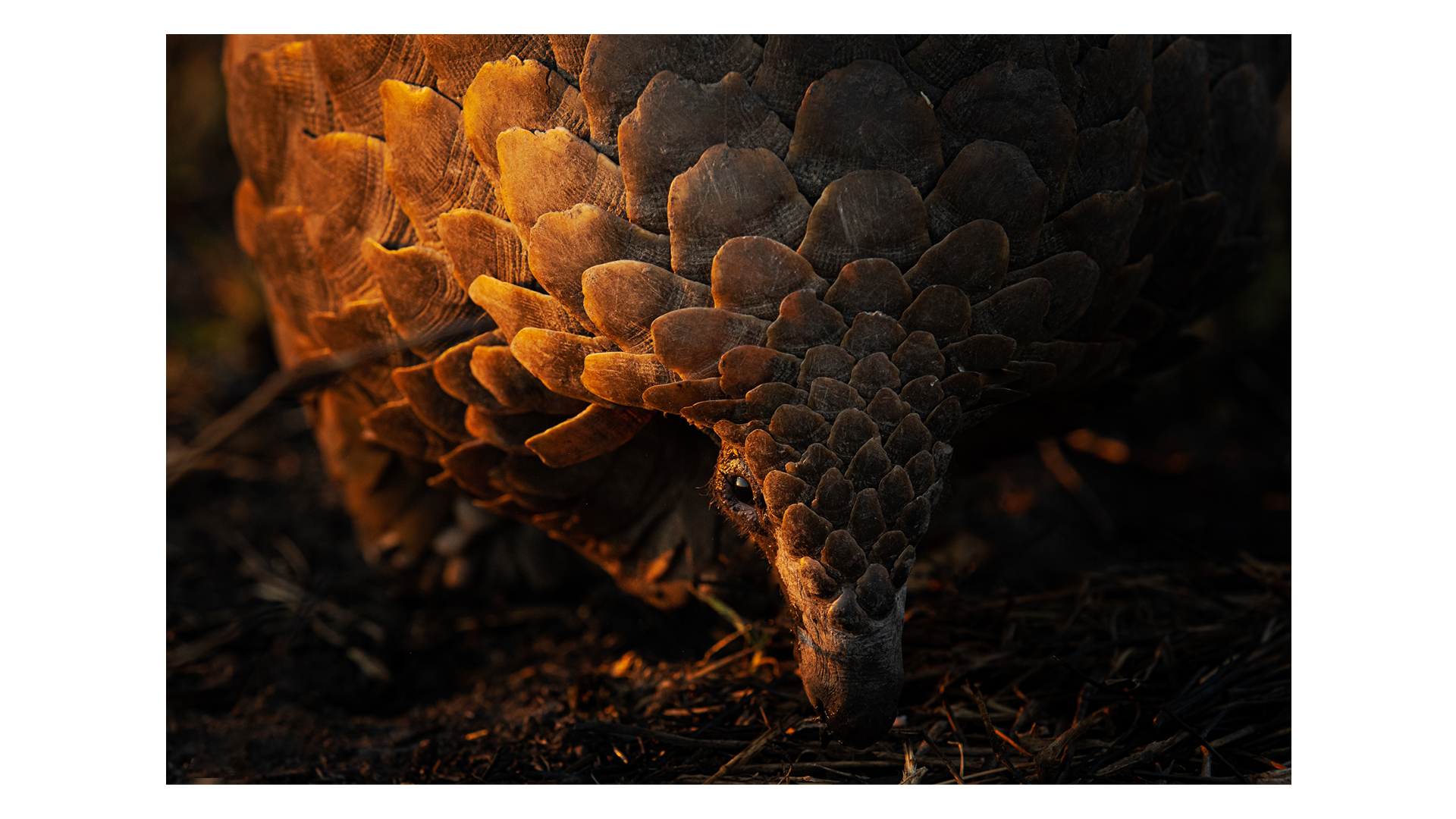The best cheap Canon camera in 2025
These are the best cheap Canon cameras if you're looking to balance performance and affordability
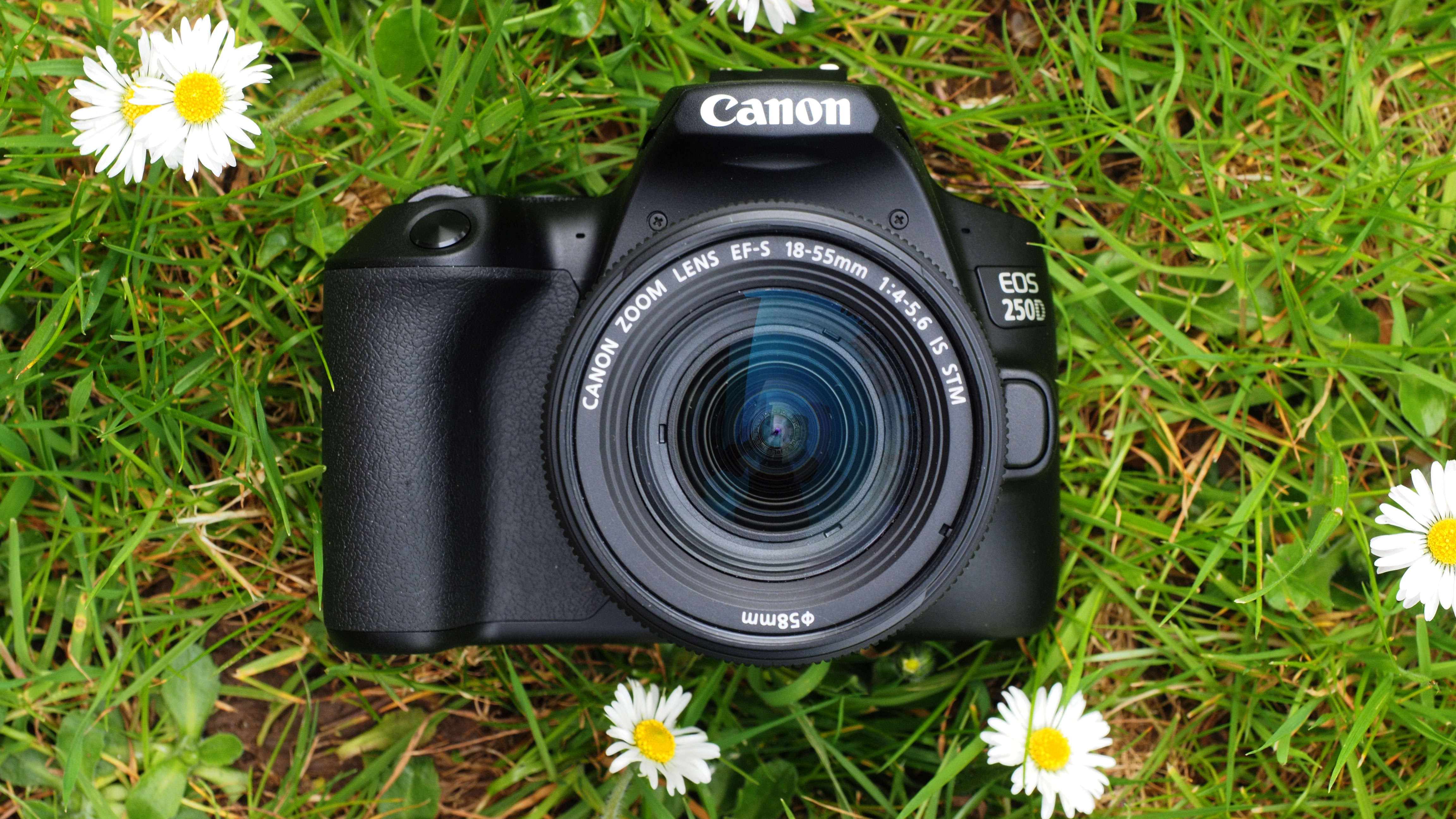
The best cheap Canon camera will provide you with an affordable entry-point to one of the most comprehensive imaging ecosystems ever made. Canon is an enormous player in the photo and video worlds, producing mirrorless cameras, compacts, DSLRs, cinema cameras, instant print cameras – the list goes on. While many of them are very expensive, many are not, and there are plenty of Canon-made options for the budget-conscious buyer.
As someone who has been using Canon cameras for more than a decade 10 years, and used to write for PhotoPlus: The Canon Magazine, I have handled all of the cheap Canon cameras on this list. I've only recommended ones that I think are worth your money, and every camera on this list has received the seal of approval not just from me, but from DCW's expert review team.
I've included options that are great for vlogging, or for photography, or for a mix of both, all of them under the $1,000/£1,000 mark, and some coming in under $500/£500. Remember that if you pick a mirrorless or DSLR camera, you'll also need one of the best Canon lenses to go with it.

Lauren is a writer, reviewer, and photographer with ten years of experience in the camera industry. She's the former Managing Editor of Digital Camera World, and previously served as Deputy Editor of our sister publication, Digital Camera Magazine. As an industry veteran, she has used and tested many Canon cameras, and brings her expertise to picking the best cheap options in the manufacturer's line-up.
The Quick List
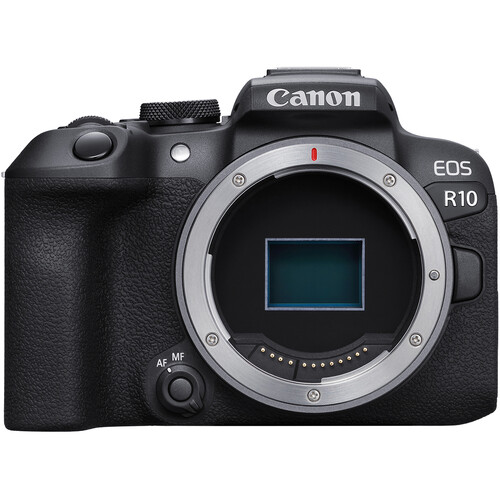
Best overall
This enthusiast camera is the most affordable route into the Canon mirrorless ecosystem, perfect for existing fans or converts. It lacks image stabilization and lenses are limited, but it's great value and a great all-rounder.
Read more below
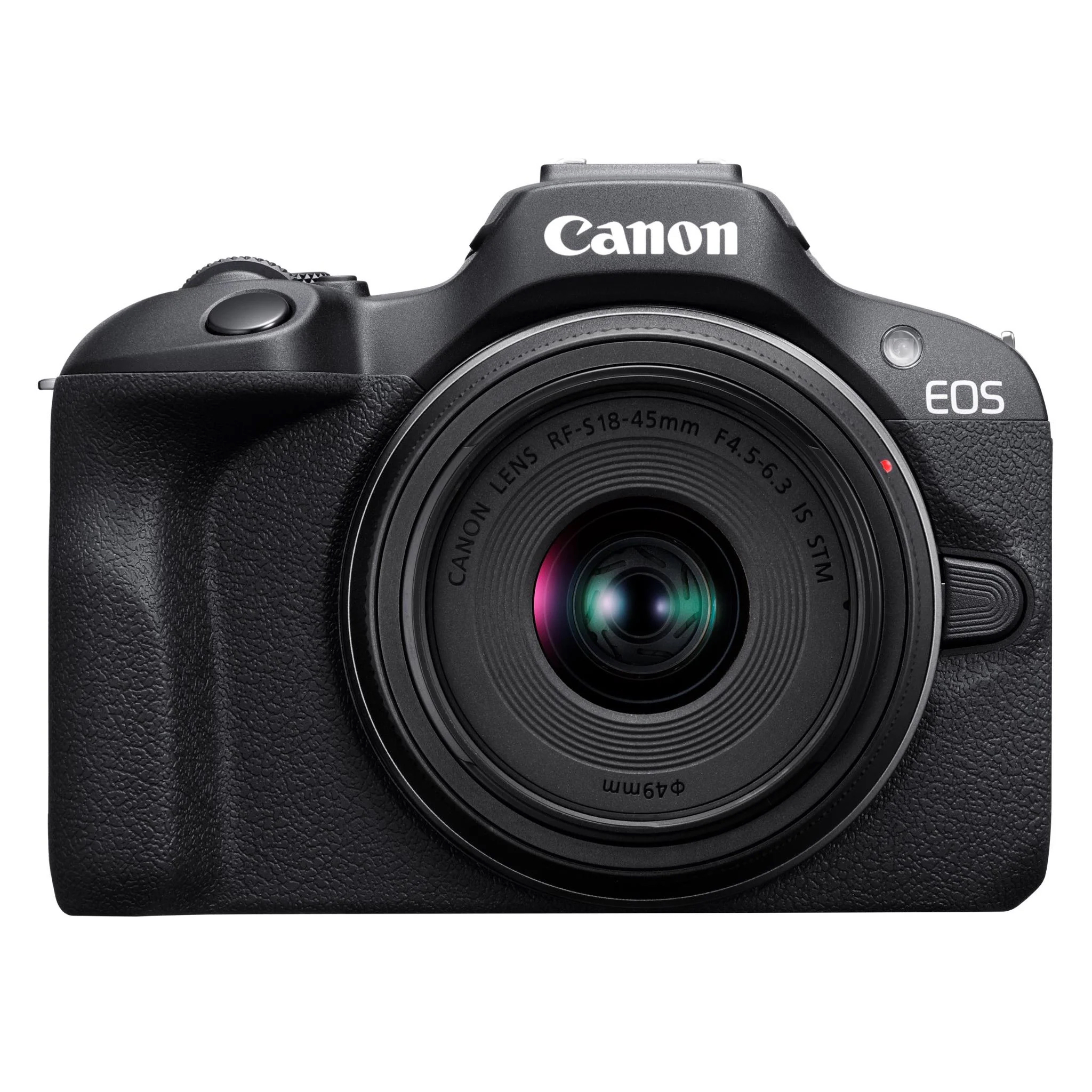
Best for beginners
This may be a mirrorless camera for beginners but it gives you high-level autofocus tech, a 24MP sensor and 4K video. It's a cheap Canon camera if you want better quality shots than a smartphone.
Read more below
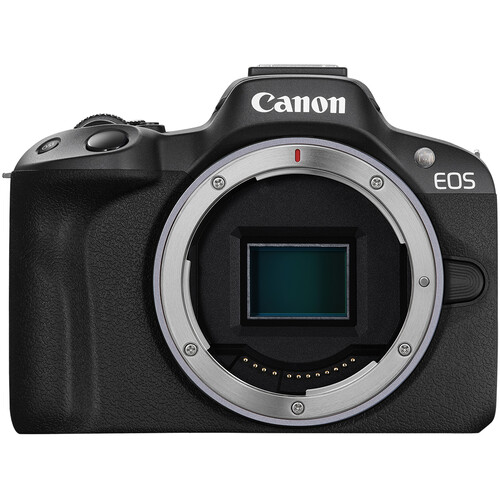
Best for creators
If you want a cheap option for content creation, this is it. It combines the small size of the M50 Mark II with the sensor and processor from the R10 and can shoot full-width 4K video in social media-friendly formats.
Read more below
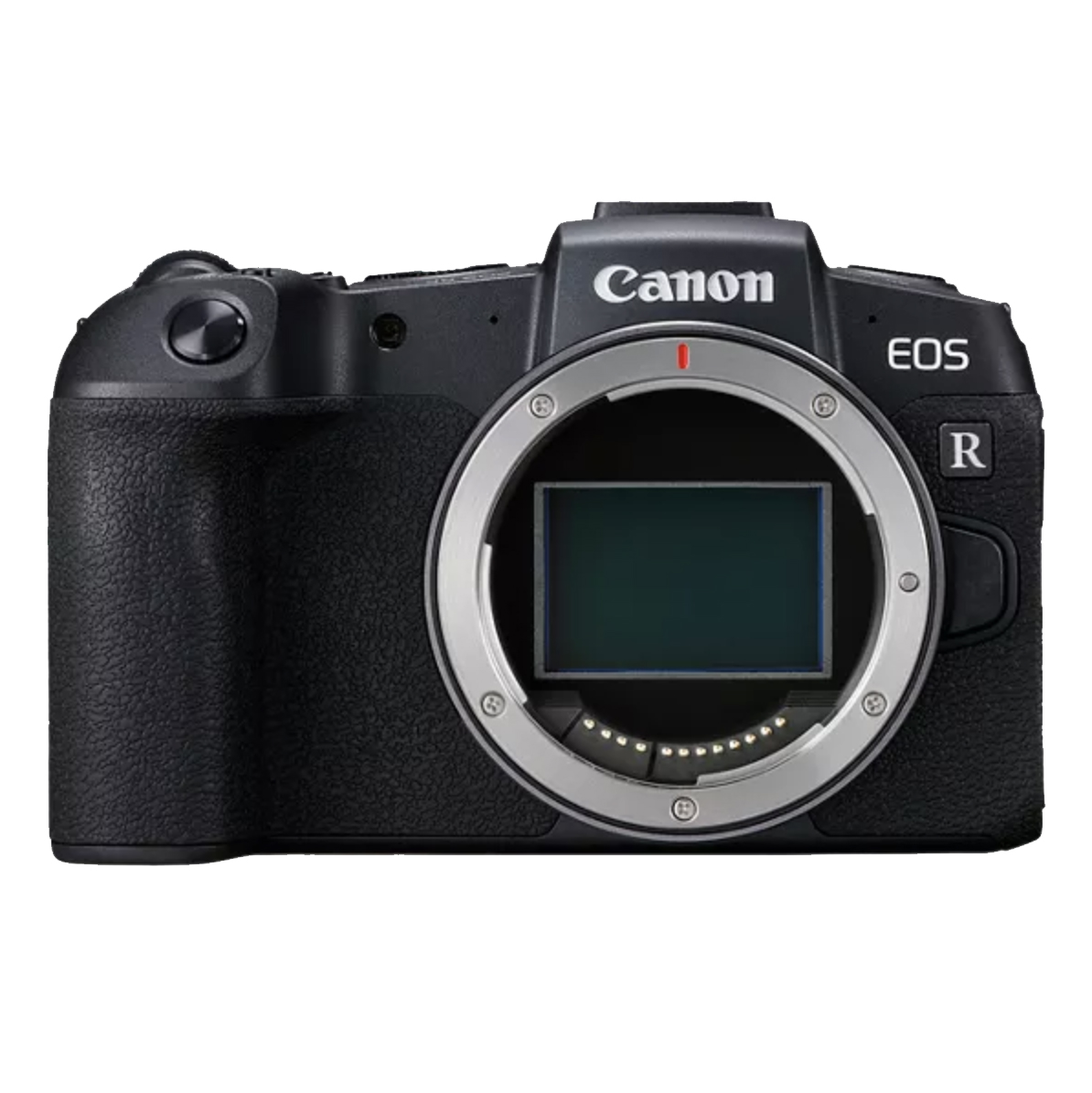
Best full-frame
The RP is now six years old but has aged exceptionally well. It's Canon's entry-level full-frame camera and the only camera on this list to give you access to the full range of RF lenses. It's svelte, portable, and one of the best-priced cameras of its kind.
Read more below
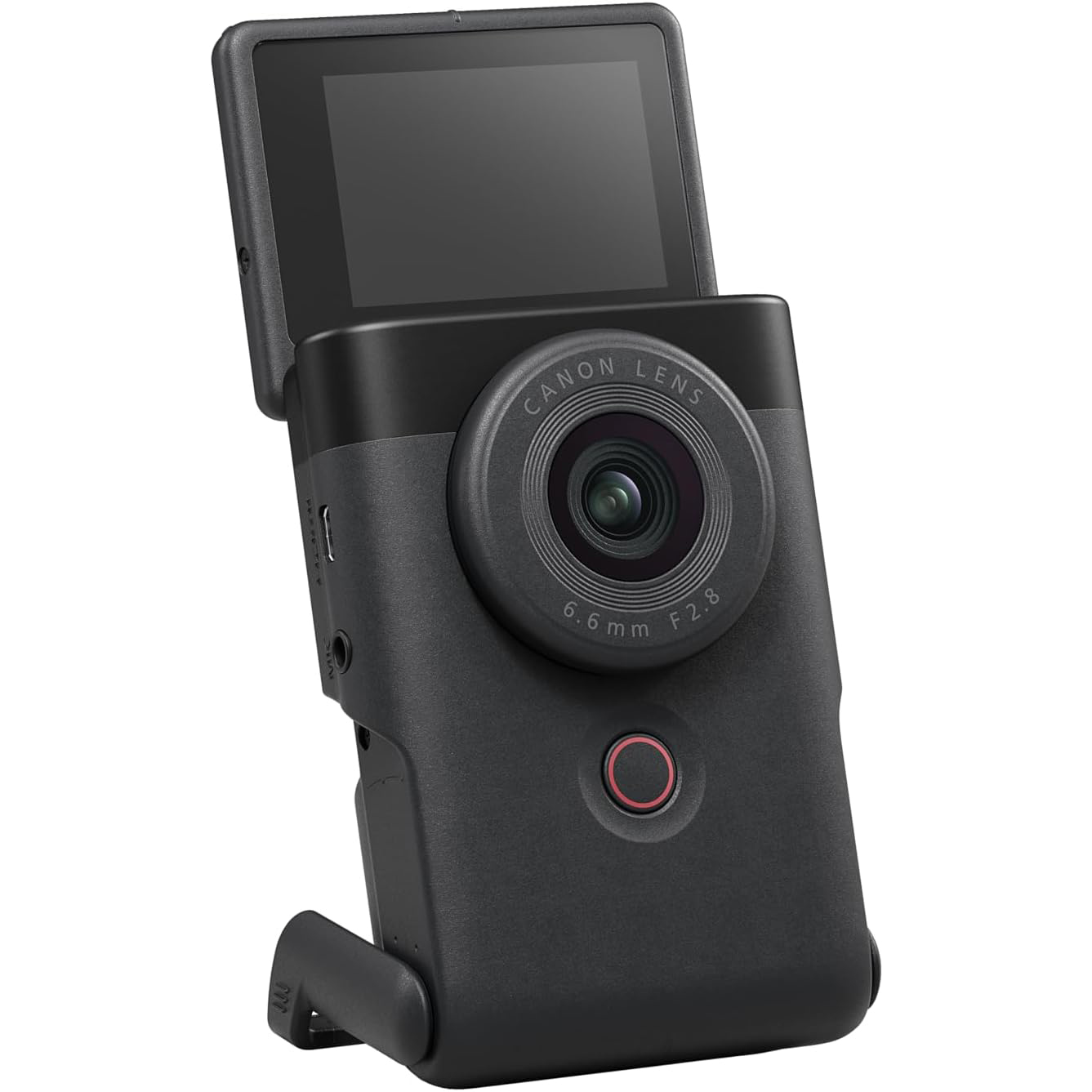
Best vlogging
This pocket-sized partner rivals a smartphone for ease of use –but it goes beyond for vlogging thanks to its built-in stand, high-quality microphones and streaming capabilities.
Read more below
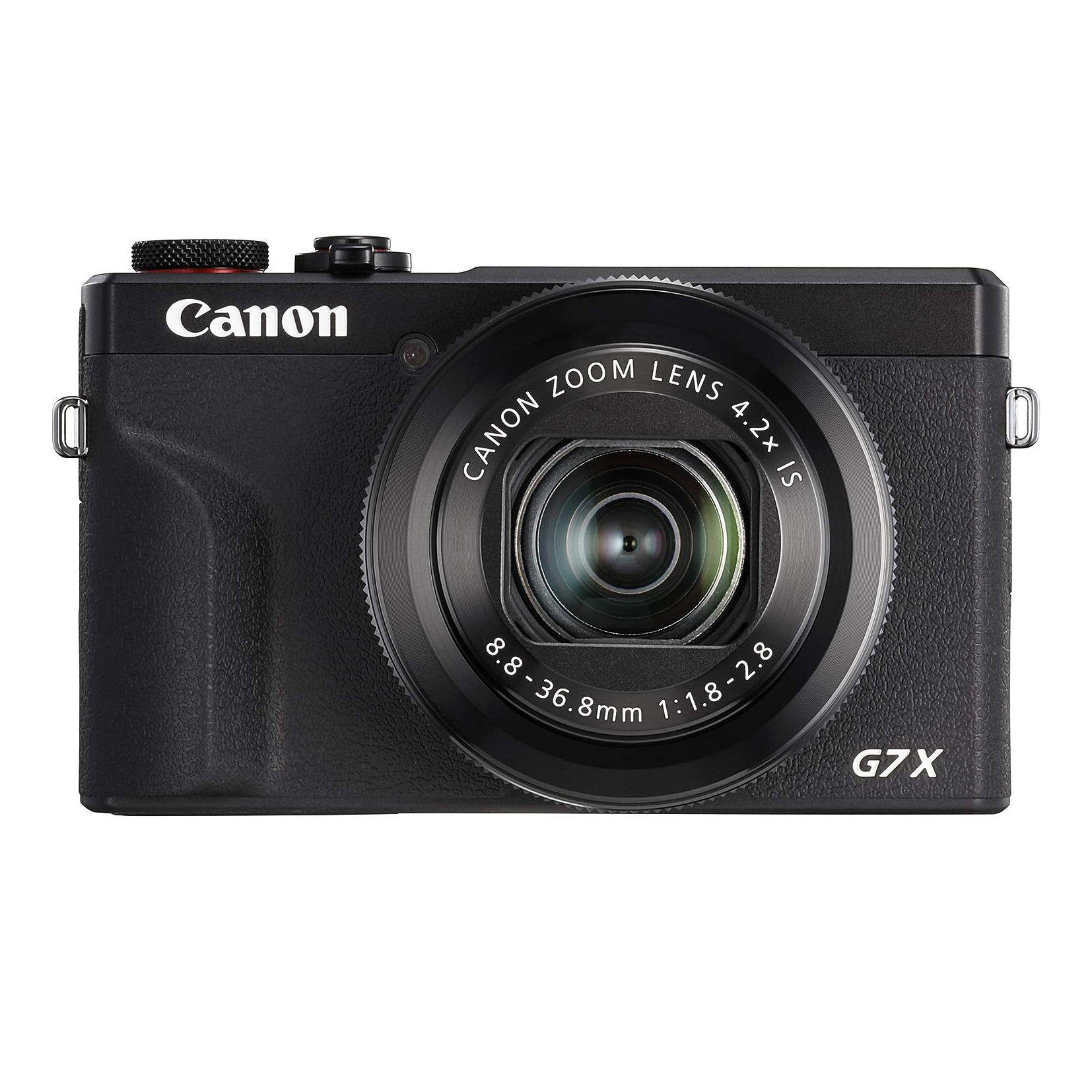
Best compact
This isn't Canon's cheapest compact, but it's priced for its performance. Stills images are high-quality, while uncropped 4K and a 3.5mm mic port let you take your video to another level.
Read more below
Load the next products ↴
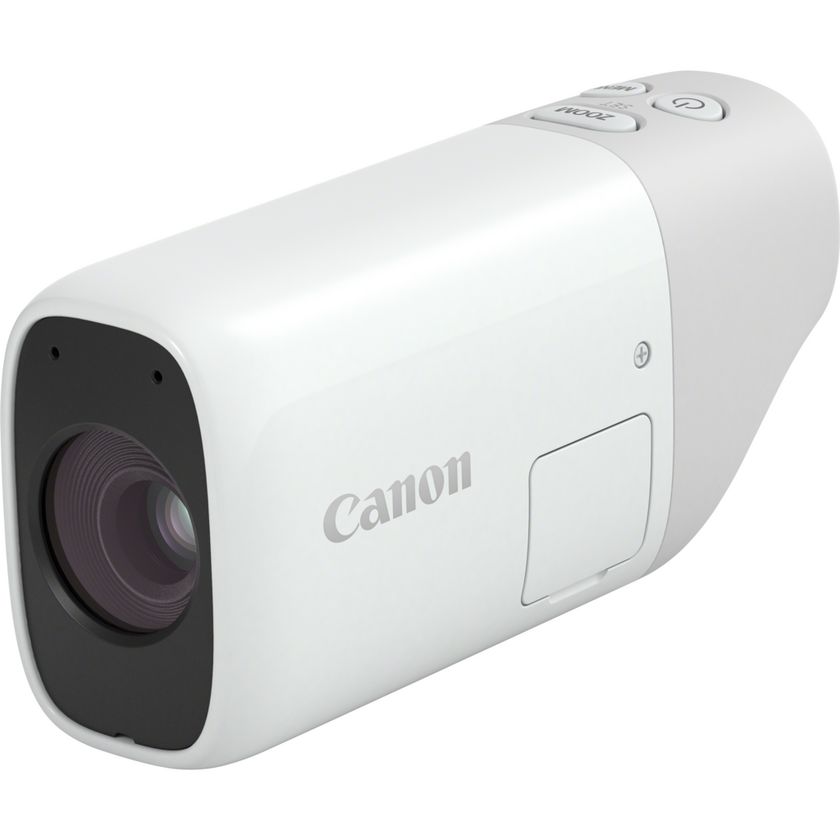
Most portable
Capable of zooming in optically to 400mm equivalent, and digitally to 800mm equivalent, the PowerShot Zoom is a bit of a one-trick pony, but is an excellent pocket-sized companion for bird-spotters and nature hikers.
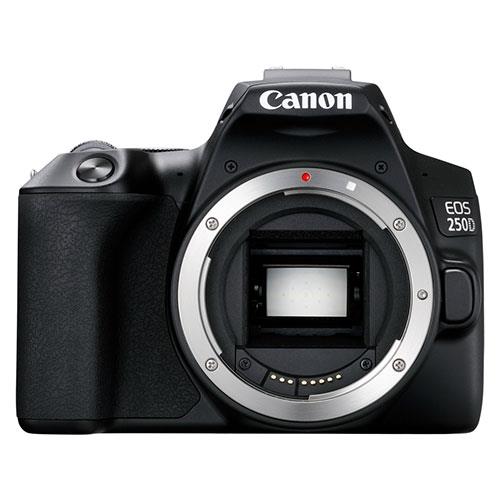
Best DSLR
Canon’s beginner-friendly DSLR is a great starting point for anyone’s journey into photography. Its specs are basic – with just 5fps burst mode and a simple 9-point autofocus system – but its guided interface and vari-angle touchscreen are a bonus.
Read more below
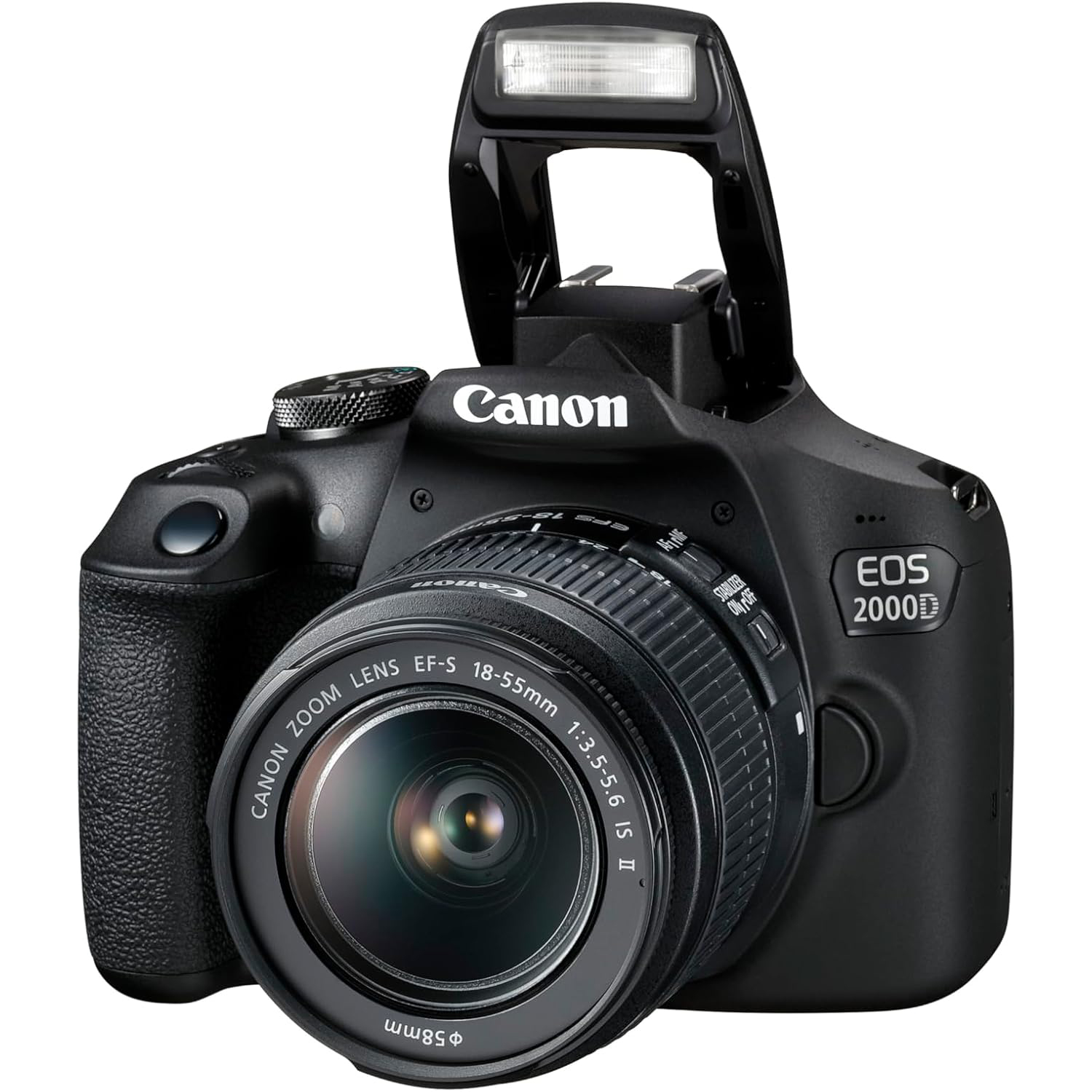
Cheapest DSLR
While it's less sophisticated than the Rebel SL3, particularly for video and fast action, the Rebel T7 is one of the cheapest DSLRs you can buy new right now, and still produces 24MP images on par with those of more expensive rivals.
The best cheap Canon camera
Why you can trust Digital Camera World
Best overall
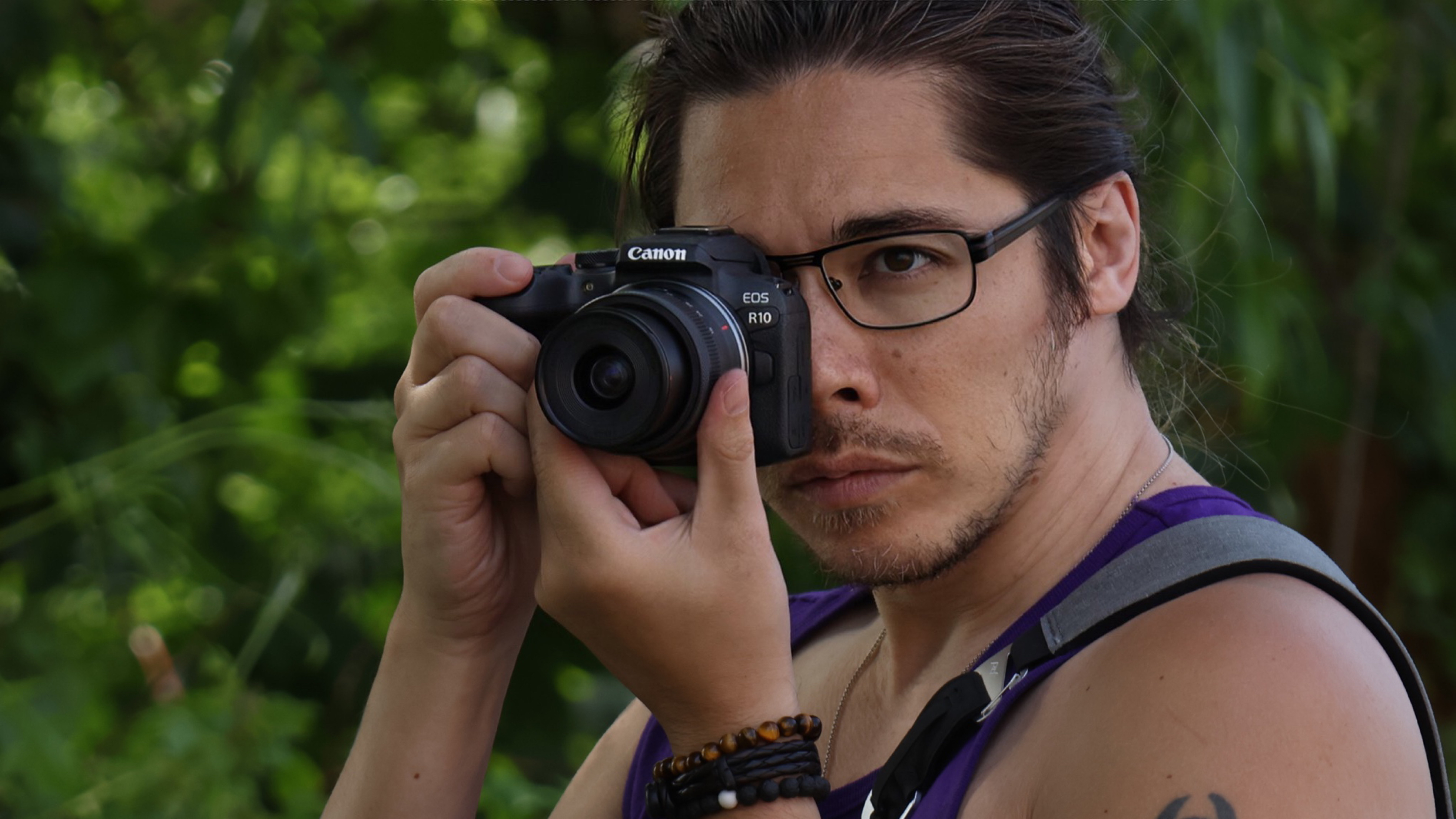
1. Canon EOS R10
Best cheap Canon camera overall
Type: Mirrorless | Sensor: APS-C size | Megapixels: 24.1MP | Lens: Canon RF mount | Viewfinder: 2.36m dots, up to 60fps refresh rate | Screen: Fixed 3-inch (non-touch)screen, 1.04m dots | Video: 4K up to 25p (1.55x crop) | Weight: 382g
The Canon EOS R10 stands out as a compact and budget-friendly powerhouse, and it's an ideal choice if you're entering the world of Canon for the first time. It gives you pro-level speed for under a grand, and in our review, we called it a brilliant value proposition, as it offers some very advanced specs in a light, affordable, novice-friendly body.
What I love about the R10 is that if you already know a lot about exposure and settings, you can get very impressive images. But if you're a total beginner, the camera will also help you develop your skills with the simple guided interfaces that Canon has become known for.
It's a fantastic all-purpose camera, with powerful stills specs like 15fps continuous shooting with full autofocus. Its video capabilities are impressive too – though if you want to shoot 4K 60p, this probably isn't going to be an ideal presenting camera because of the combination of the 1.6x APS-C effect and 64% additional crop.
If you're stepping up from an APS-C DSLR or smartphone shooter, though, this is probably the best cheap Canon camera to push your creativity and get great results from your photos and videos.
Read our full Canon EOS R10 review
Best for beginners
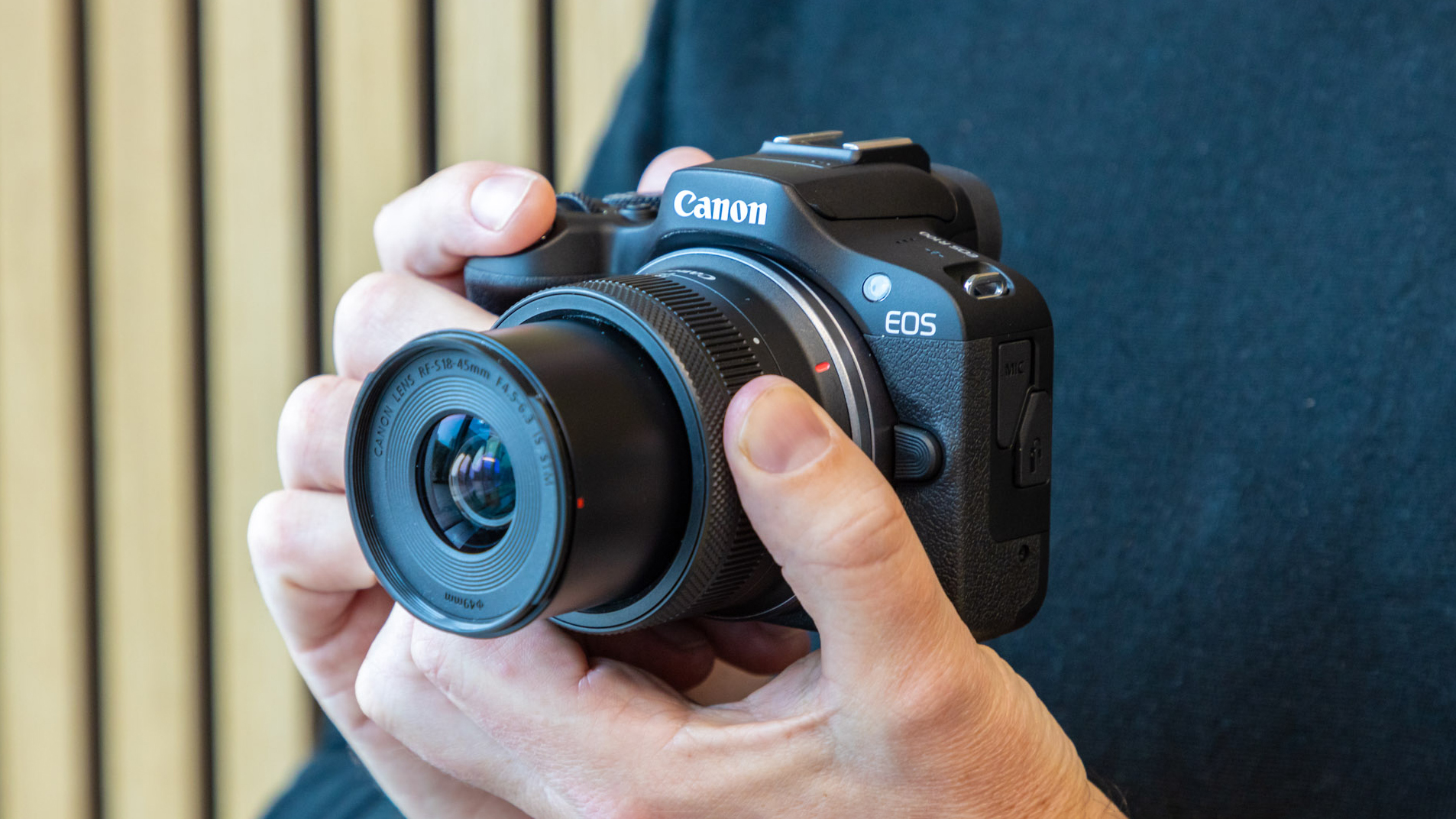
2. Canon EOS R100
Best cheap Canon camera for beginners
Type: Mirrorless | Sensor: APS-C | Megapixels: 24.1MP | Lens: Canon RF mount | Viewfinder: 2.36m dots, up to 60fps refresh rate | Screen: Fixed 3-inch (non-touch)screen, 1.04m dots | Video: 4K up to 25p (1.55x crop) | Weight: 356 g
A beginner mirrorless camera like the Canon EOS R100 is perfect for learning the basics of photography. The viewfinder and rear screen (which sadly isn't a touchscreen) show you exactly what your images will look like as you adjust the exposure settings so that you can understand exactly how settings like aperture and shutter speed affect the shot.
The 24.1MP APS-C sensor delivers images worthy of far more advanced cameras – and our expert reviewer was blown away by the quality of the files during testing. Unlike other cheap Canon cameras for beginners, you even get a microphone jack – so if you want to shoot video you can get great quality sound using a dedicated mic. That said, the 4K video does have limitations; unlike the Canon EOS RP, it incurs a 1.55x crop and doesn't make use of the Dual Pixel Autofocus.
The R100 is an incredibly compact camera, and paired with the similarly compact Canon RF-S lenses it can easily fit in a sling bag. If you've got larger hands you might find it a bit too small, and larger lenses can outbalance the camera body for a top-heavy experience. But given the R100 can be regularly found for under $500/£500, it's a very capable and well-priced option even if you're not a beginner and want a second camera.
Read our full Canon EOS R100 review
Best for creators

3. Canon EOS R50
Best cheap Canon camera for content creation
Type: Mirrorless | Sensor: APS-C | Megapixels: 24MP | Lens: Canon RF mount | Viewfinder: EVF, 2.36m dots | Screen: 3-inch vari-angle touchcreen, 1,620k dots | Video: 4K 30p | Weight: 328g
Canon's APS-C EOS R system has come a long way in a short time, and the EOS R50 offers a remarkable combination of features and value for a brand-new camera. It's not designed specifically for content creation, but its specs make it one of the best hybrid cameras from Canon if you're on a lower budget.
It gives you 4K video capture with the Dual Pixel AF system, which means that subjects stay in focus even when they're moving around the frame. There's a crisp electronic viewfinder and 24MP APS-C sensor combined with interchangeable lenses is a step up in image quality from a compact like the Canon Powershot G7 X Mark III, Powershot V10, or a camera phone used to create online content.
There's no image stabilization (which is expected at this price point) and there's a crop factor for video (which you get in all APS-C cameras). However, if you're looking for the most affordable route into the EOS R system and a great all-purpose camera for content creation and great connectivity, this is the one I'd go for.
Read our full Canon EOS R50 review
Best full-frame

4. Canon EOS RP
Best cheap Canon camera with a full-frame sensor
Type: Mirrorless | Sensor: Full-frame CMOS | Megapixels: 26.2MP | Lens: RF lens mount | Viewfinder: 0.39-inch OLED EVF, 2.36m dot | Screen: 3-inch vari-angle touchscreen, 1,040k dots | Continuous shooting speed: 5fps | Viewfinder: EVF, 2.36 million dots | Max video resolution: 4K UHD
The EOS RP is still the most affordable of Canon's range of full-frame mirrorless cameras. As we summarized in our review, it's small, versatile, and great value for money. You don't necessarily get cutting-edge tech, but the cheaper the camera gets, the more we like it.
Having a full-frame sensor gives you an advantage in low light. When you compare the image quality of full-frame against the APS-C cameras or 1-inch sensor models on this list, the EOS RP will give you the best results overall – sharper, clearer photos with more detail and less noise.
Full-frame sensor cameras are generally bigger (and more expensive), but the EOS RP manages to stay small and affordable. This means it can sometimes feel overbalanced by bigger lenses, so if you're planning to use telephoto lenses for wildlife or sports, it may not be the best option. But generalist shooters and those with smaller EOS R lenses will be fine.
Despite being a few years old, the EOS RP is still a great starter camera for those wanting to switch to full-frame mirrorless – and if you have any old Canon EF lenses you can use these with an adaptor sold separately by Canon. With a fully articulating screen, 4K video, and ergonomic design, it's a dream to handle, too.
Read our full Canon EOS RP review
Best vlogging

5. Canon PowerShot V10
Best cheap Canon camera for vlogging
Type: Compact | Sensor: 1-inch CMOS | Megapixels: 20.1MP | Lens: 6.6mm f/2.8 (equivalent 18mm for stills, 19mm for video) | Viewfinder: N/A | Screen: 2-inch 180° tilting touchscreen | Video: 4K 30p, FullHD 60p | Weight: 211g
With the Canon PowerShot V10, Canon addressed the long-awaited need for a dedicated vlogging camera that isn't a traditional camera with video features added on. Operating the rectangular camera (which is about the same size as a box of playing cards) is as simple as tapping a button and pointing at what you want to record – which could be yourself thanks to the super selfie flip screen.
This gets rid of complex settings like lenses, log modes, shutter speeds, or tripods, and allows you to set up a video in seconds. The V10's specs aren't very advanced. The 1-inch sensor is smaller than APS-C and full-frame, meaning low-light filming is behind the quality of cameras like the EOS RP. Recording is also limited to an hour. But that's also what helps to keep it fairly affordable.
Having tested the V10 while writing an article for Canon, I would never use it as my daily driver. But it's a fantastic camera to pop in a bag or handbag if you're heading out on an adventure and want to keep your gear light. I'd recommend it if you want a cheap Canon camera for spontaneous video capture, social media sharing, streaming, or a super straightforward filming approach.
Read our full Canon PowerShot V10 review
Best compact
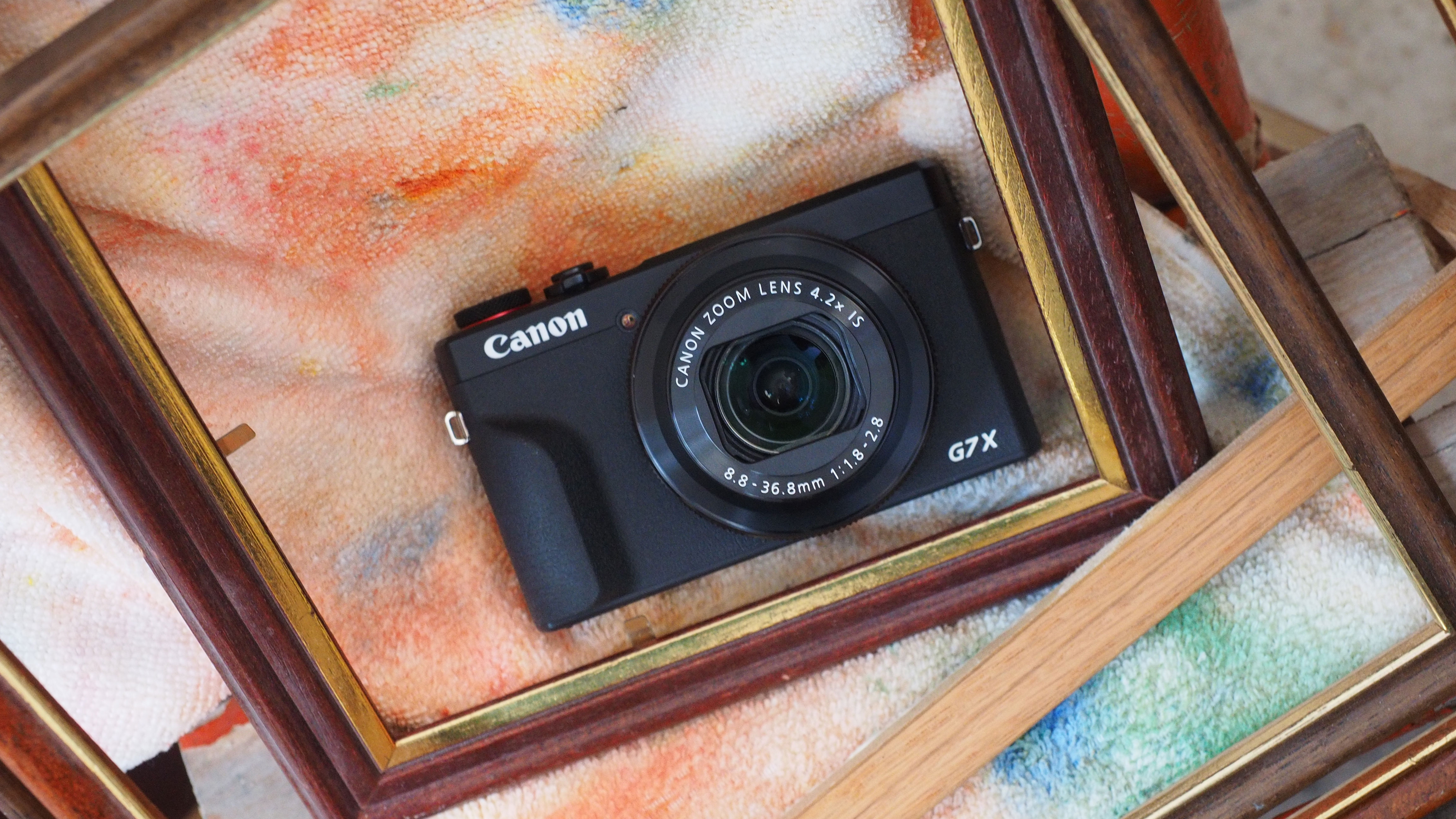
6. Canon PowerShot G7 X Mark III
Best cheap Canon compact camera
Type: Compact | Sensor: 1-inch CMOS | Megapixels: 20.1MP | Lens: 24 - 100 mm (35 mm equivalent) | Viewfinder: N/A | Screen: 3-inch tilting touchscreen, 1.04m dots | Video: 4K UHD at 30p, 25p | Weight: 304g
The previous PowerShot G7 X Mark II became one of the best cameras for vlogging because of its excellent autofocus system, 24-100mm (equivalent) lens, image stabilization, and flip-up screen. The Canon PowerShot G7 X Mark III shares these features but also gets full 4K video and a 3.5mm mic port so that you can record better audio.
Like the Powershot V10 above, it’s particularly good for content creation but handles like a traditional compact camera with more controls on the body. If you're not a vlogger and don't need features like live streaming, the G7X Mark III is still a brilliant compact camera. I love the lens' bright f/1.8-2.8 aperture for performance in low light and I don't mind the lack of a viewfinder. The flip-up screen is convenient for composing shots at all angles, especially if you're taking selfies or group shots with friends.
Granted, it's not the cheapest camera in this guide, but you're partly paying for the convenience of size – or lack of it. If you want a compact Canon camera that's small enough to keep in your pocket, the G7X Mark III packs a very strong performance for the price.
Canon has since released an updated compact designed for video that somewhat threads the needle between the older G7 X Mark III and the newer V10 – the Canon PowerShot V1. It's more expensive than either of the older cameras, hence why I've kept them as our inclusions in this guide. However, the V1 still comes in under $999/£999, so could have some appeal to budget-conscious shooters. It could also be easier to find than the cheaper G7 X Mark III, which is very popular thanks to viral moments on YouTube and TikTok, and has a tendency to sell out.x
Read our full Canon PowerShot G7 X Mark III review
Most portable
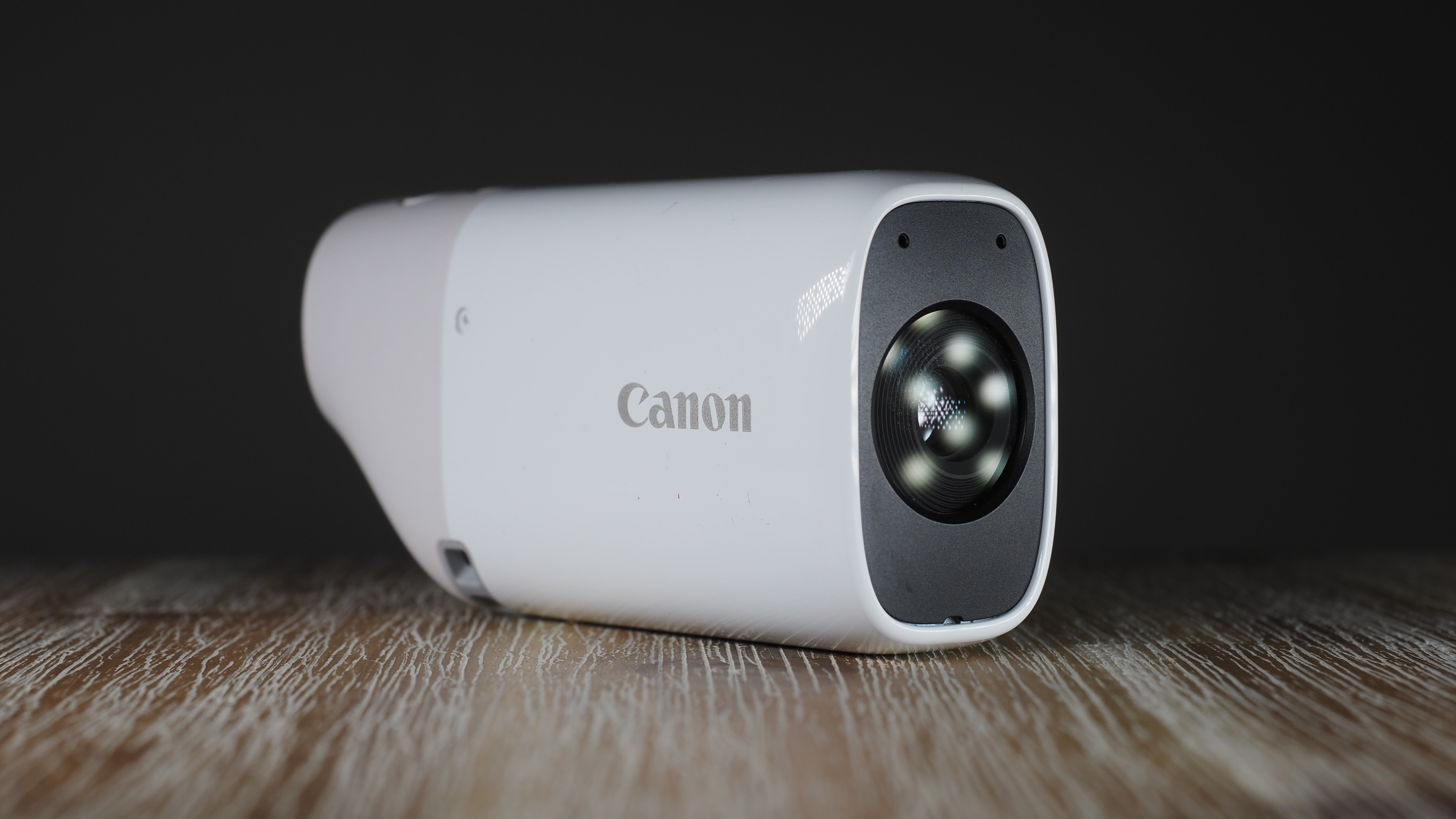
7. Canon PowerShot Zoom
A pocket-sized 180-800mm zoom that's great for birding
Type: Compact | Sensor: 1/3-inch CMOS | Megapixels: 12.1MP | Lens: Dual 13.8mm f/5.7 and 55.5mm f/6.2 (equivalent 100mm and 400mm, with 800mm digital zoom option) | Viewfinder: 0.39-inch OLED EVF, 2.36m dots, 100% coverage | Screen: N/A | Video: FullHD 24p | Weight: 145g
Something of a curious novelty in the Canon lineup, the PowerShot Zoom is exactly what it sounds like – a big old zoom. Specifically, it's a pocketable monocular camera that's capable of optically zooming to an equivalent focal length of 400mm, and digitally extending that to a whopping 800mm. It also boasts 4-axis stabilisation to make these extreme focal lengths actually useable, and is capable of capturing stills at 12.1MP and Full HD video at 24p.
It's an odd little thing – suited best to quite specific purposes. Birdspotters especially will get a kick out of it, as that long zoom range combines rather well with a respectable 10fps burst rate – more than enough to capture shots of even fast-moving avian subjects. To get equivalent range and speed on a mirrorless or DSLR camera, you would realistically have to spend ten times the asking price of the PowerShot Zoom. Though of course, your resultant images would be much, much better.
It's going to be quite a specific type of user that gets much out of the PowerShot Zoom. If you're looking for something that can slip into the pocket of a waterproof, won't weigh you down on a hike, and will capture decent images of birds and wildlife – here it is. Just don't expect it to do much else.
Read our full Canon PowerShot Zoom review.
Best DSLR
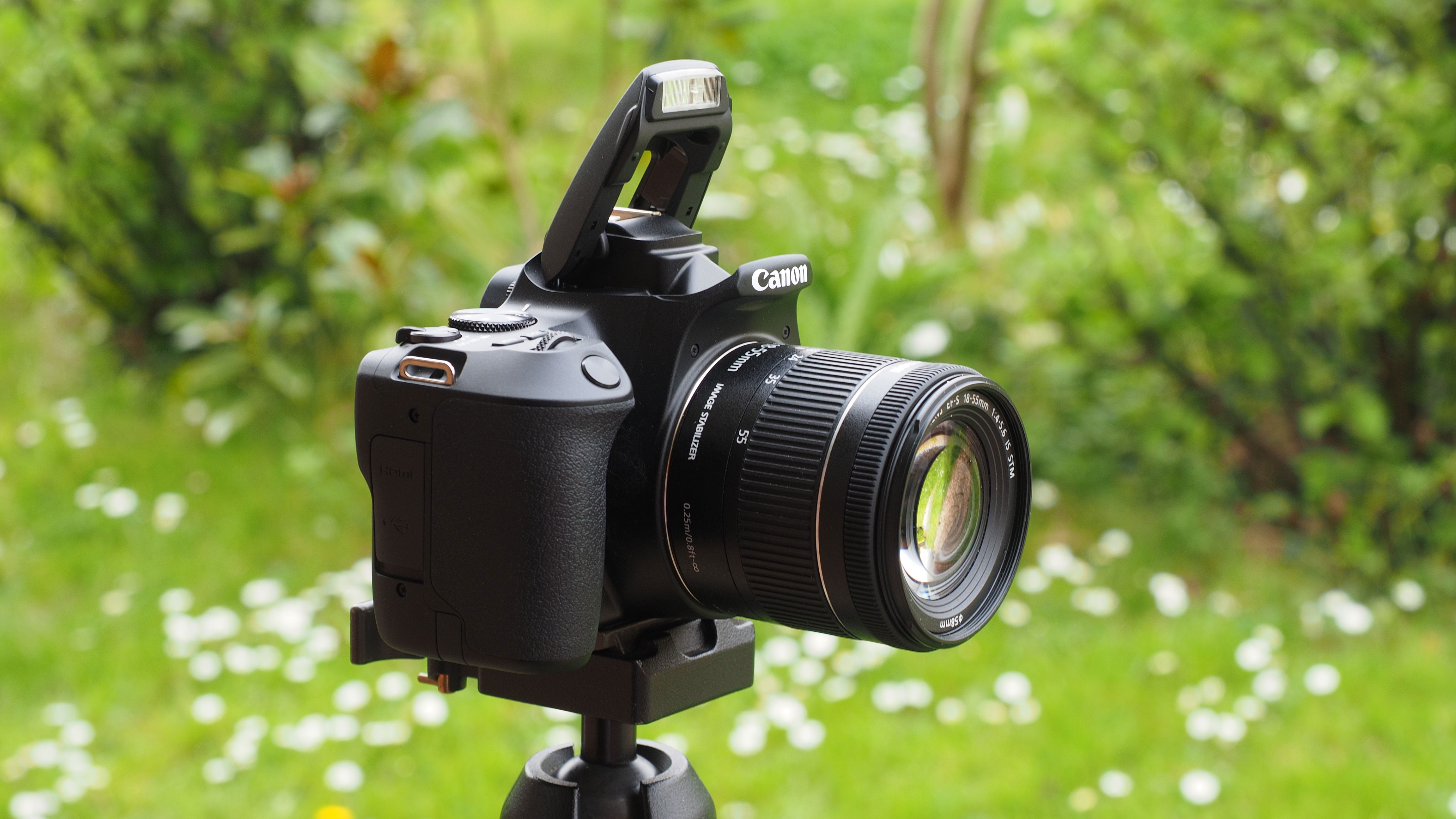
8. Canon EOS Rebel SL3 / EOS 250D
The best cheap Canon DSLR
Type: DSLR | Sensor: APS-C | Megapixels: 24.2MP | Lens: Canon EF-S mount | Viewfinder: Optical pentamirror, 95% coverage, 0.87x magnification | Screen: 3in vari-angle touchscreen, 1,040,000 dots | Video: 4K UHD at 60p, 50p, 30p, 25p, 24p | Weight: 451g
The Rebel SL3 / EOS 250D replaces Canon's older Rebel SL2 / EOS 200D, adding 4K video and better live-view autofocus. It proves that the DSLR format is still a fantastic choice for beginners on a budget, and there is a huge range of EF-S lenses to choose from beyond a kit lens that comes with the camera.
I'd say it's slightly chunkier and easier to grip than the beginner EOS R100, plus you get an optical rather than an electronic viewfinder, which means the battery life is slightly longer because it's not continually powering a digital display.
There are several cheaper DSLRs than the Rebel SL3 (EOS 250D in the EU), including the 24-megapixel EOS 2000D and 18-megapixel EOS 4000D. The latter has been discontinued and the former is featured below, but if you have the budget to get to the Rebel SL3, I'd say it's definitely worth the higher outlay. Pay just a little extra for this DSLR you get a lovely hybrid model with 4K video and excellent handling.
There's a vari-angle touchscreen on the back for easy composition and with Canon’s Dual Pixel CMOS AF technology, tapping the autofocus in live view is snappy. I also love that you can start from a simple Guided user interface while still learning, and then switch to a standard setup when you feel more confident and want greater control.
Read our full Canon EOS Rebel SL3 / EOS 250D review
Cheapest DSLR
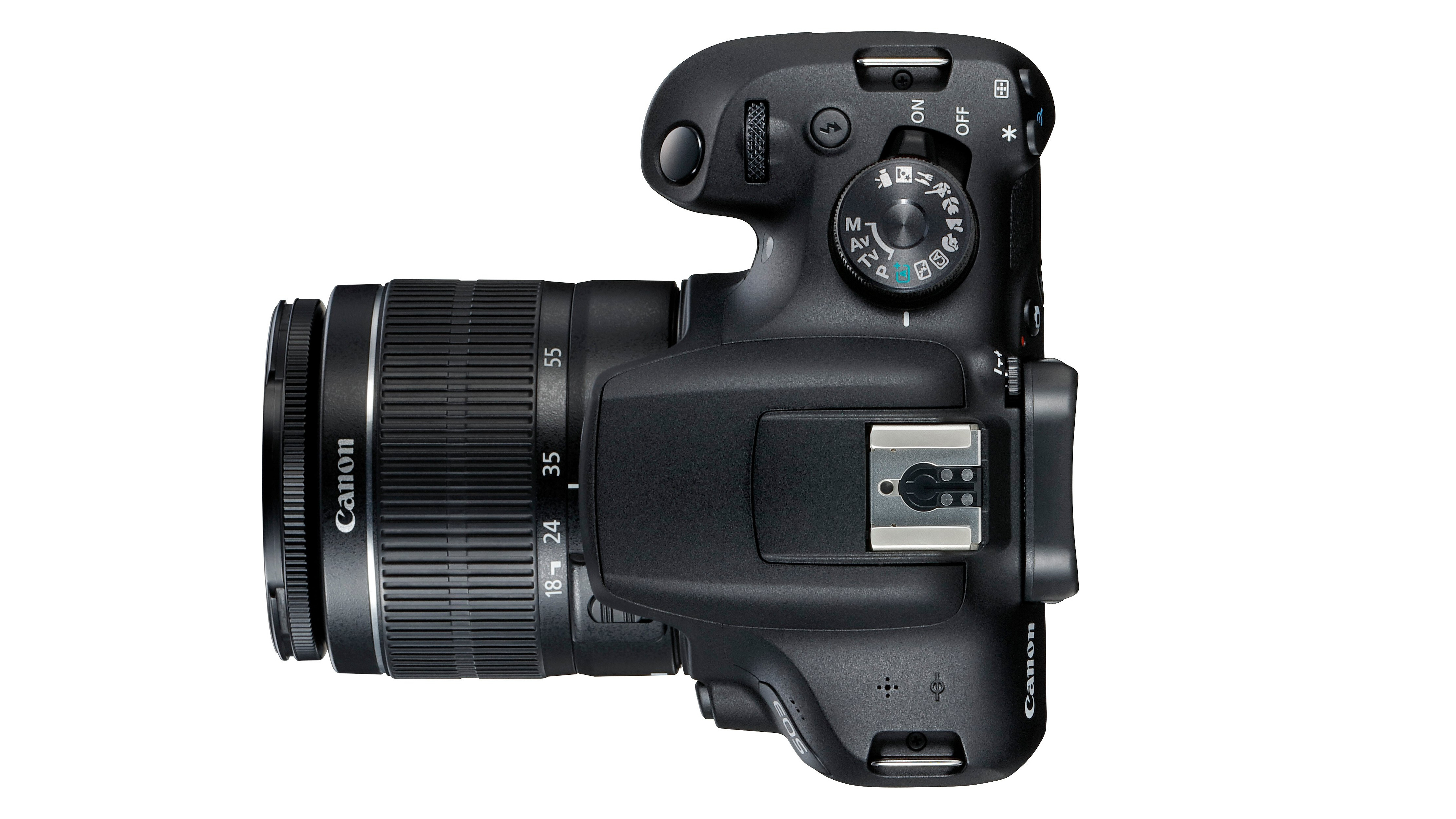
9. Canon EOS Rebel T7 / EOS 2000D
The cheapest Canon DSLR you can buy new
Type: DSLR | Sensor: APS-C | Megapixels: 24.1MP | Lens: Canon EF-S mount | Viewfinder: Optical pentamirror, 95% coverage, 0.80x magnification | Screen: 3in fixed, 920,000 dots | Video: Full HD at 30p, 25p, 24p | Weight: 451g
This is the cheapest DSLR that Canon still offers on its books. The Rebel T7, or EOS 2000D in the EU and some other territories, is a super-simple counterpart to the Rebel SL3 featured above. While its sensor resolution is essentially the same at 24.1MP, in many other respects, this is a more limited camera.
In terms of image quality, however, you're getting basically the same deal as the more advanced camera. In our testing, the Rebel T7 scored basically identically to the Rebel SL3 in terms of resolution, dynamic range and signal-to-noise ratio. It's eminently capable of producing dynamic images full of punchy colors and crisp contrast.
However, with a pedestrian burst rate of 3fps, the Rebel T7 lags behind the Rebel SL3 in terms of speed. It also has quite a rudimentary autofocus system, with just 9 points when using the viewfinder. And unlike the Rebel SL3, it doesn't offer the option to benefit from Canon's Dual Pixel CMOS autofocus when using Live View. Video-wise, the Rebel T7 is also pretty basic, offering no 4K to speak of, and Full HD at a maximum frame rate of 30p.
But let's not get carried away. The Rebel T7 is the cheapest DSLR you can buy new right now – and that also makes it one of the cheapest interchangeable-lens cameras you can buy new. While it's a bit slow, a bit basic, and lacking in serious video features, it's a perfectly viable camera for photography students and beginners on a budget.
Read our full Canon Rebel T7 (EOS 2000D) review
How to choose the best cheap Canon camera
To choose the best affordable Canon camera for you it's a good idea to define your needs and what you want to prioritize; ease-of-use, portability, advanced features, or sensor size. If you're a beginner, look for user-friendly interfaces and accessible controls that will help to guide you at first.
Some photographers are all-rounders, but if you're anything like me you'll shoot one subject or style more than others, be it wildlife, portraits, or landscapes. If you're into video and content creation more than stills, pick one of the cameras that offers live streaming and 4K recording.
The camera descriptions here summarize each option, but you can research the models within your budget range in more detail by reading our full reviews. That'll help you to understand what it's like to use in real life, and what its shortcomings are.
If you've narrowed the best cheap Canon camera down to a few options, start to compare key specs like resolution, video features, and autofocus capabilities. I'd also recommend that you check the camera's compatibility with additional lenses if you're going to expand your gear later. Some of the cameras in this list have fixed lenses, but many have interchangeable lenses, and there are far more lenses in Canon's RF range than its RF-S lenses.
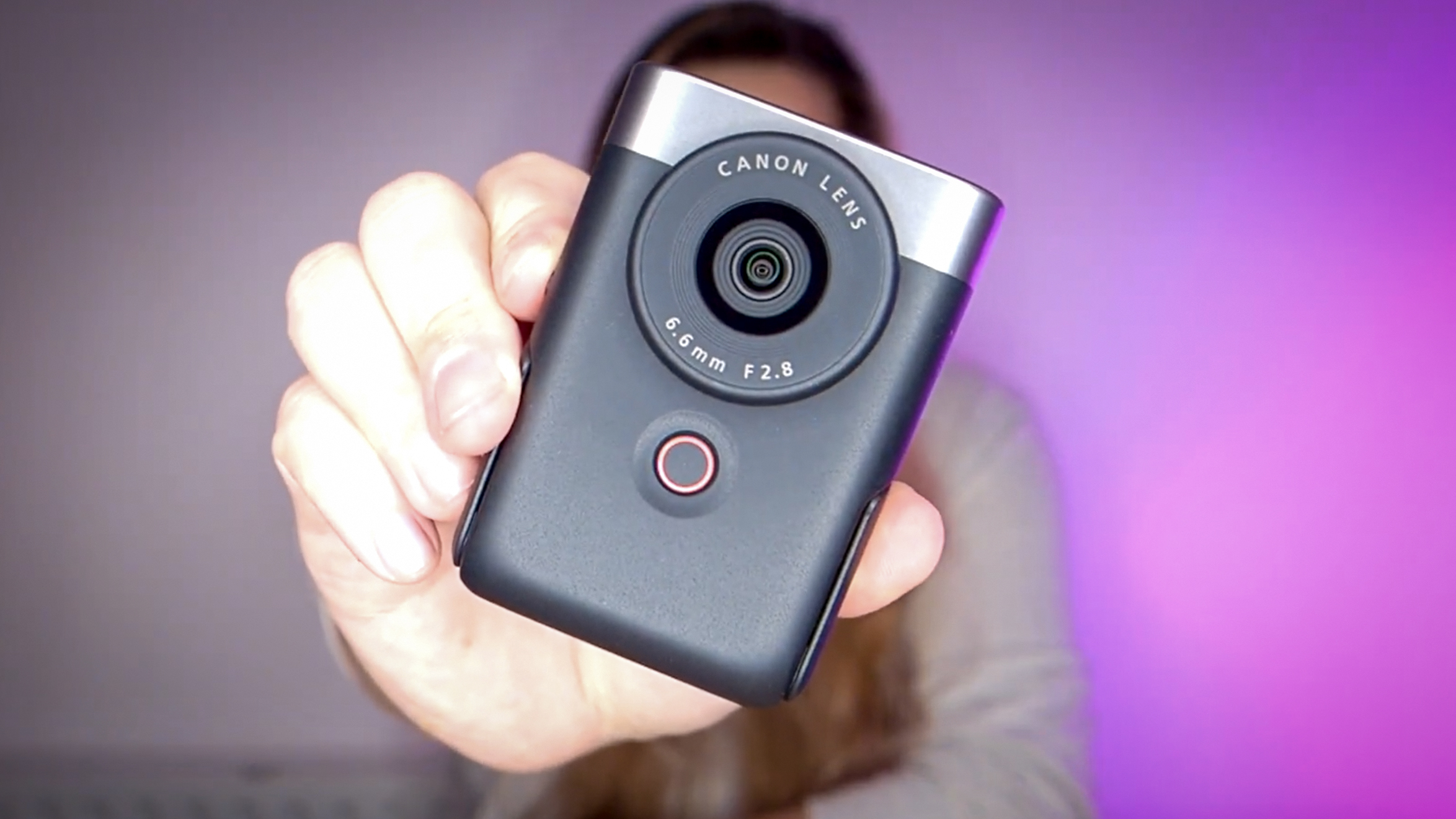
How we test
We test cameras both in real-world shooting scenarios and in carefully controlled lab conditions. Our lab tests measure resolution, dynamic range, and signal-to-noise ratio. Resolution is measured using ISO resolution charts, dynamic range is measured using DxO Analyzer test equipment and DxO Analyzer is also used for noise analysis across the camera's ISO range. We use both real-world testing and lab results to inform our comments in buying guides.
FAQs
What is a good cheap Canon camera?
All of the models in this guide are excellent cheap Canon cameras, depending on what you need them for. The EOS RP is probably the best all-rounder, and a bargain full-frame option. However, the Canon EOS R100 can often be found for under $500/£500 with a kit lens, and having tried it out myself, I think that's unbeatable value for the quality.
Which Canon is the cheapest?
Technically speaking, the cheapest Canon camera on sale is the Canon Ivy Cliq+2/Zoemini S2 instant camera, which also doubles up as a mini photo printer. I haven't included it on this list though, as it is more a fun novelty item than a serious camera, with both the prints it produces and the digital files it creates being of sub-par quality.
The cheapest digital compact that I've included on this list is the Canon PowerShot Zoom – with the caveat that it is a very specialised camera. It's great for wildlife spotting, but doesn't have a huge amount of utility beyond that.
The cheapest interchangeable-lens Canon camera you can buy is the Canon Rebel T7 (EOS 2000D). This budget DSLR may be pretty simplistic, but it still benefits from an APS-C sensor and Canon EF-S lens mount, those two things by themselves putting it head and shoulders above a smartphone in terms of photographic versatility.
If you'd rather go mirrorless, the cheapest option is the Canon EOS R100, which is Canon's entry-level model essentially designed to replace DSLRs like the Rebel T7. Again, it's pretty basic, but provides a large sensor and access to an excellent system of lenses – which you can keep using if down the line you want to upgrade to a more sophisticated camera.
Is the Canon EOS M series discontinued?
Yes – Canon has discontinued its mirrorless EOS M line and appears to have no plans to resurrect it. The EOS M mirrorless cameras, featuring APS-C sensors, pre-date the EOS R series, and enjoyed significant popularity for their small bodies, cute aesthetics and relatively affordable price tags. However, when Canon introduced the full-frame EOS R mirrorless series it began to look like the EOS M range's days were numbered, and once APS-C EOS R cameras joined the party, the writing was very much on the wall.
EOS M cameras still have their fans, but the fact that there is no real future for the series makes them hard to justify as an investment. You'll just get better value from an EOS R mirrorless camera or an EOS DSLR, which will offer you a lot more lenses to choose from.
Get the Digital Camera World Newsletter
The best camera deals, reviews, product advice, and unmissable photography news, direct to your inbox!

Lauren is a writer, reviewer, and photographer with ten years of experience in the camera industry. She's the former Managing Editor of Digital Camera World, and previously served as Editor of Digital Photographer magazine, Technique editor for PhotoPlus: The Canon Magazine, and Deputy Editor of our sister publication, Digital Camera Magazine. An experienced journalist and freelance photographer, Lauren also has bylines at Tech Radar, Space.com, Canon Europe, PCGamesN, T3, Stuff, and British Airways' in-flight magazine. When she's not testing gear for DCW, she's probably in the kitchen testing yet another new curry recipe or walking in the Cotswolds with her Flat-coated Retriever.
